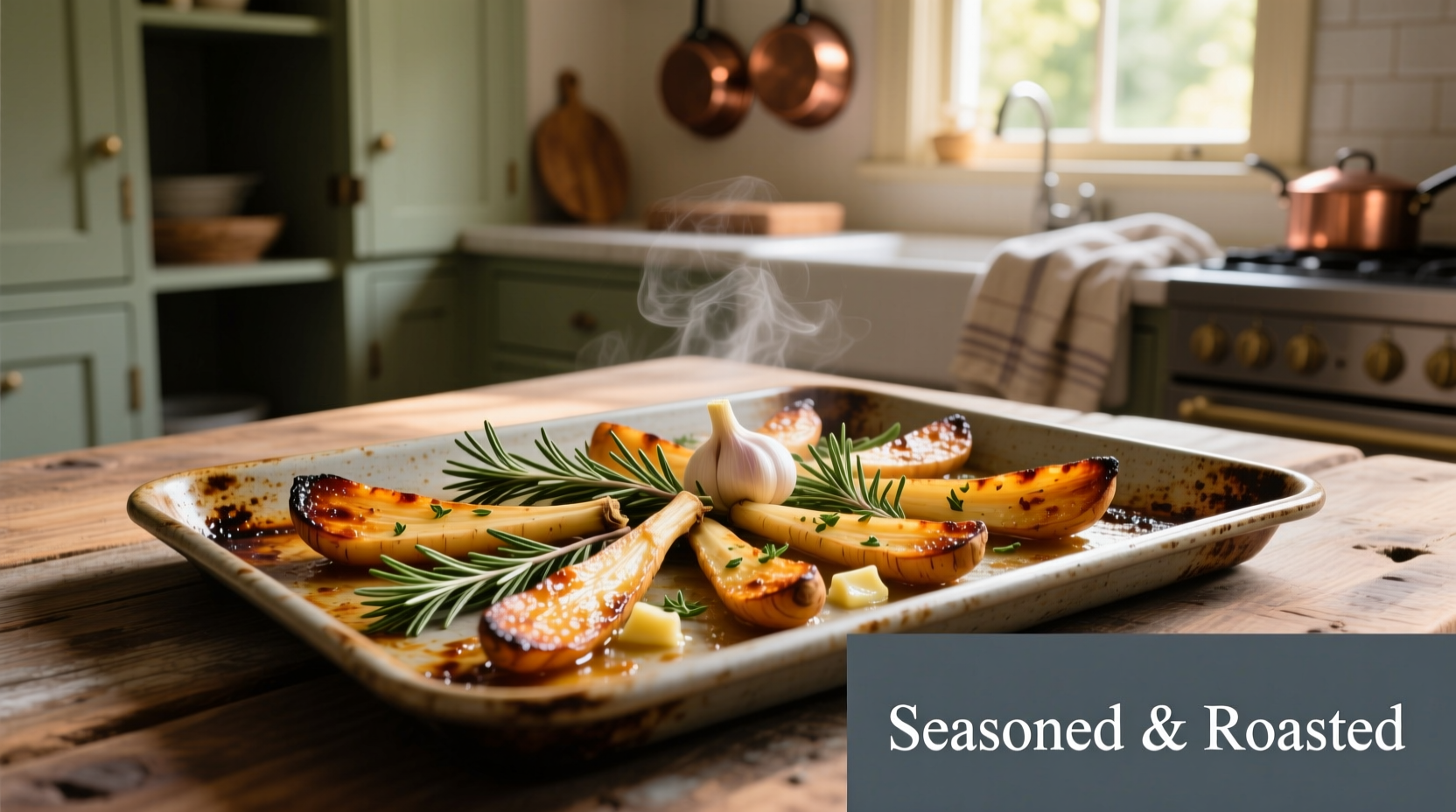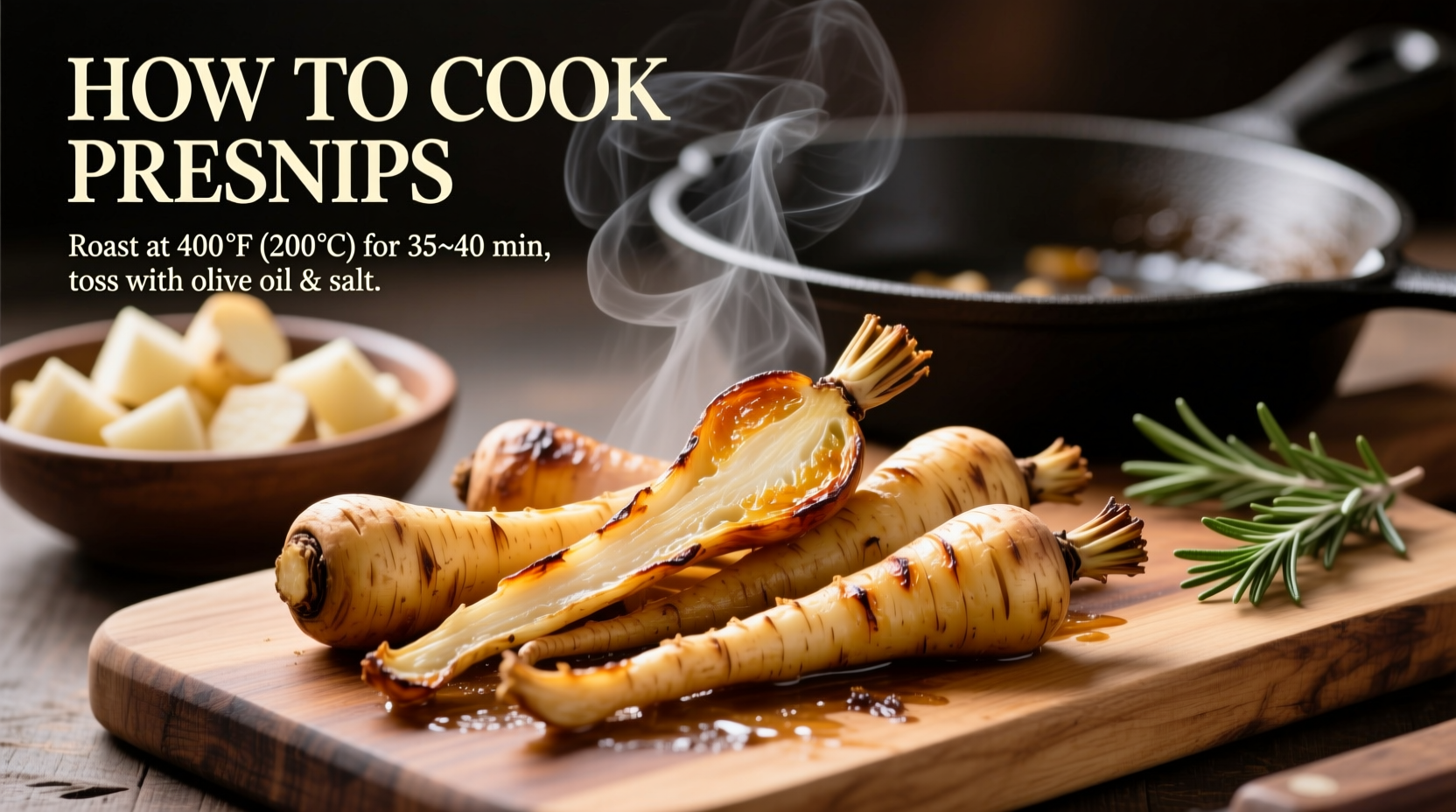Discover how to cook parsnips to their full potential with professional techniques that highlight their natural sweetness and complex flavor. Unlike carrots or potatoes, parsnips require specific preparation to avoid bitterness and achieve optimal texture. This guide reveals the exact timing, temperature, and seasoning combinations that make parsnips shine in any meal.
Selecting the Best Parsnips for Cooking
Choose firm, medium-sized parsnips (6-8 inches long) with smooth skin for the sweetest flavor. Larger parsnips often develop a woody core that requires removal, while smaller ones offer concentrated sweetness ideal for roasting whole. Avoid specimens with black spots, soft areas, or excessive branching. Peak season runs from fall through early spring when cold temperatures convert starches to sugars, enhancing natural sweetness.
| Size Category | Best Cooking Method | Preparation Tip |
|---|---|---|
| Small (under 6") | Roasting whole | Leave unpeeled for roasted texture |
| Medium (6-8") | All methods | Peel and remove central core |
| Large (over 8") | Mashing or pureeing | Remove woody core completely |
Essential Preparation Techniques
Proper preparation prevents bitterness and ensures even cooking. Peel parsnips with a vegetable peeler using downward strokes to remove the thin outer layer where bitterness concentrates. For larger specimens, cut lengthwise and scoop out the fibrous core with a small knife. When cutting, maintain uniform ½-inch thickness for even cooking—thinner slices work for gratins while thicker chunks suit roasting.
Unlike potatoes, parsnips don't require soaking, but a 5-minute blanch in boiling water before roasting improves texture by breaking down complex sugars. This culinary technique, documented in USDA agricultural research, enhances caramelization during high-heat cooking.

Five Professional Cooking Methods
1. Perfect Roasted Parsnips (The Flavor Enhancer)
Preheat oven to 400°F (200°C). Toss 2 lbs parsnip wedges with 2 tbsp olive oil, 1 tsp salt, and ½ tsp black pepper. Spread in single layer on parchment-lined baking sheet. Roast 25 minutes, flip, then add 1 tbsp maple syrup and 1 tbsp fresh thyme. Continue roasting 15-20 minutes until deeply caramelized and fork-tender. The natural sugars in parsnips undergo Maillard reaction at 300°F, creating complex flavor compounds that simple boiling cannot achieve.
2. Creamy Parsnip Puree (The Smooth Alternative)
Boil 2 lbs peeled, cubed parsnips until tender (15-18 minutes). Drain thoroughly—excess water causes gluey texture. Blend with 3 tbsp butter, ¼ cup warm cream, 1 small roasted garlic clove, and ½ tsp nutmeg until smooth. For restaurant-quality texture, pass through a fine-mesh sieve. This method creates a naturally sweet alternative to mashed potatoes with 40% fewer carbohydrates according to USDA FoodData Central.
3. Pan-Seared Parsnips (The Quick Fix)
Cut parsnips into ¼-inch coins. Heat 1 tbsp oil and 1 tbsp butter in skillet over medium-high heat. Add parsnips in single layer (work in batches if needed). Cook 4-5 minutes per side until golden brown. Deglaze pan with ¼ cup chicken or vegetable stock, scraping browned bits. Finish with 1 tbsp fresh rosemary and a squeeze of lemon. This high-heat method develops complex flavors through controlled caramelization.
4. Parsnip Soup (The Comfort Food)
Sauté 1 chopped onion and 2 minced garlic cloves in 2 tbsp butter until soft. Add 1.5 lbs cubed parsnips and 4 cups broth. Simmer 20 minutes until tender. Blend until smooth. Stir in 2 tbsp cream and ½ tsp ground coriander. For depth, add a Parmesan rind while simmering. Historical records show parsnips were commonly used in medieval European soups before potatoes arrived from the Americas.
5. Parsnip Gratin (The Impressive Side)
Thinly slice 2 lbs parsnips using mandoline. Layer in buttered baking dish with ½ cup grated Gruyère cheese between layers. Pour over mixture of 1.5 cups warm cream, 1 minced garlic clove, ½ tsp thyme, salt and pepper. Cover with foil, bake at 375°F (190°C) for 45 minutes. Remove foil, top with additional cheese, and bake 15 minutes until golden. Rest 10 minutes before serving for clean slices.
Flavor Pairing Science
Parsnips' natural sweetness pairs perfectly with warm spices like nutmeg, cinnamon, and cardamom. Their earthy notes complement herbs including thyme, rosemary, and sage. For contrast, balance with acidic elements like lemon juice or vinegar. Professional chefs often add a pinch of cayenne to roasted parsnips—this doesn't make them spicy but enhances perceived sweetness through trigeminal nerve stimulation.
Troubleshooting Common Issues
- Bitter taste: Caused by overcooking or using woody-core parsnips. Always remove the central core from larger specimens and avoid cooking beyond fork-tender stage.
- Mushy texture: Results from boiling too long or improper storage. Cook just until tender and store raw parsnips in a perforated plastic bag in the refrigerator's crisper drawer.
- Poor caramelization: Insufficient oven temperature or overcrowded pan. Roast at minimum 400°F and ensure space between pieces for moisture evaporation.
Storage and Leftover Tips
Store raw parsnips in a perforated plastic bag in your refrigerator's crisper drawer for up to 3 weeks. Cooked parsnips keep in airtight containers for 4 days. Reheat roasted parsnips in a 350°F oven for best texture—microwaving makes them soggy. Freeze pureed parsnips for up to 3 months; texture holds better than roasted versions.











 浙公网安备
33010002000092号
浙公网安备
33010002000092号 浙B2-20120091-4
浙B2-20120091-4